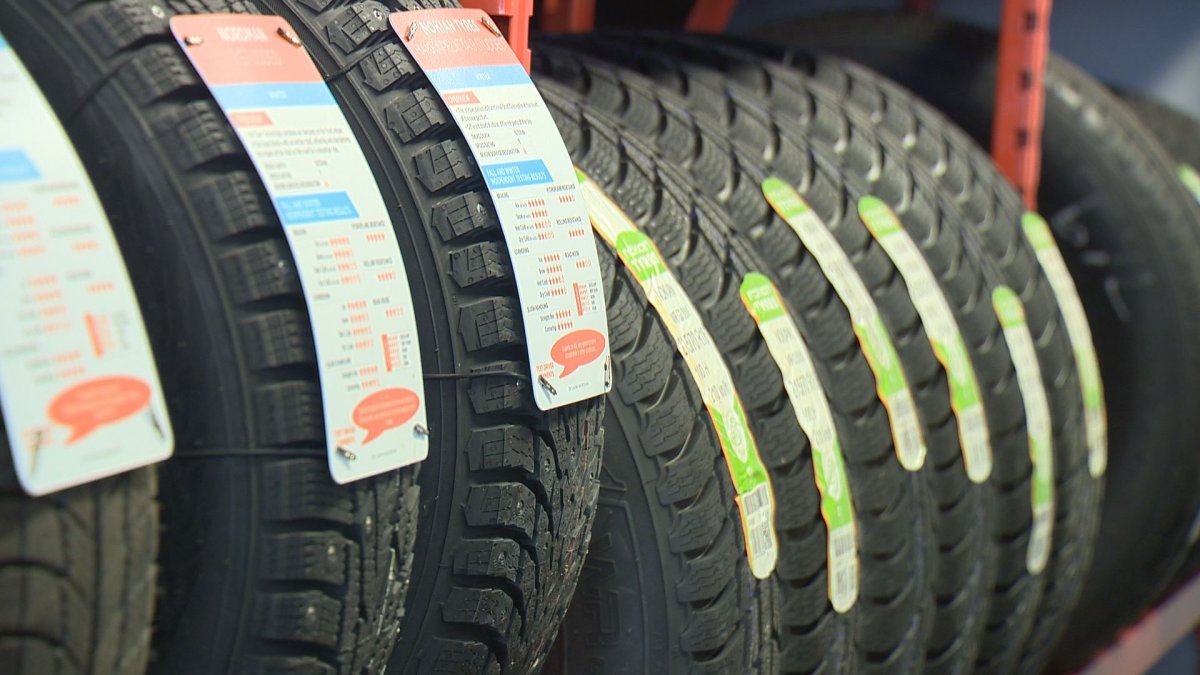With the first day of autumn in the rearview mirror now, winter driving is on the horizon.

And between now and the first snowfall comes the annual rush of motorists seeking to either buy winter tires or have their summer slicks swapped over.
In B.C., provincial requirements state winter tires must be put on starting Oct. 1 if you plan on travelling over mountain passes.
According to the province, a winter tire must be labelled with the letters ‘M+S’ and/or have a three-peaked mountain/snowflake symbol.
The province recommends that drivers install three-peaked mountain-snowflake tires for cold-weather driving, and, for extreme conditions, to carry chains.
It also notes that summer tires are not permitted during winter months, and that chains on summer tires are not an acceptable substitute for winter tires on signed B.C. highways.

As for swapping tires, the rush lasts around six to eight weeks.
Tire shops say they’re already starting to see a bump in business and that they expect it to increase as temperatures drop.
“We’re in the early stages,” said Wes Ortwein, zone manager for Kal-Tire in the Okanagan. “The warm weather is having a pretty gradual approach, which is good.
“But definitely there are lots of people who are starting to think about switching to winters.”

“It’s begun,” added Bruce Stranaghan, owner of Integra Tire in Kelowna, stating it’s been busy the last week and a half.
“The phones are ringing and people are getting organized with getting their tires changed over.”
Stranaghan said when it comes to swapping over, drivers face a lot of options, including tire sizes, rims, brands, and if all-weather tires are a possible option.
“There’s no one option,” said Stranaghan. “It just depends on their situation, and what is the best option for that particular person or family.”

Both Ortwein and Stranaghan said weather patterns will determine how short or long the tire-change rush lasts.
“It starts right around now, the end of September or early October,” said Ortwein. “And then it’ll start to slow down in mid- to late-November.
“But if the weather turns cold and we get some snow accumulation, that changes and then the rush becomes quite a bit more frantic. There’s more panic and folks start to line up to get their tires changed.”

To prevent lineup frustrations, tire shops recommend planning –and booking — ahead, regardless of current weather conditions.
“Now is the time to get organized,” said Stranaghan. “I know the weather is really nice, but that’s going to change.
“To me, it’s get organized right now. If you don’t want an appointment right now, you can set one up in a couple of weeks – then you can take that off your to-do list.”

Ortwein added, “If we do get some significant snowfall, there’ll be a lot more panic, and some (open) appointments will get picked up pretty quickly.
“And then you could be out of a spot and might be in a lineup to get in and get changed.
“Using that to your advantage and planning ahead, it really alleviates a lot of pressure for drivers who don’t know when the snow’s coming.”
For more about winter driving in B.C., click here.


Comments